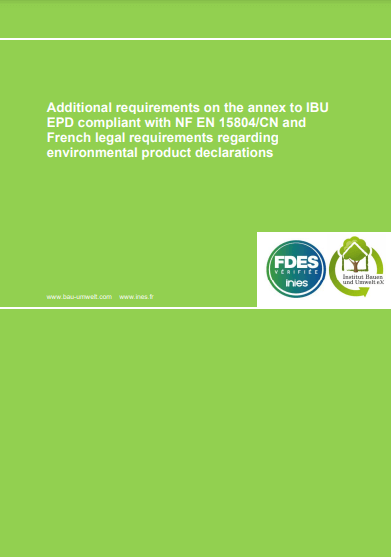PEP (Building equipment)
PEP ecopassport® concern electrical, electronic and HVAC equipment products. These products are intended for different sectors: building, automotive, infrastructure. The INIES database contains products intended for building. They are the environmental identity card of the products, based on the results of their Life Cycle Assessment (LCA), with a view to calculating the environmental performance of the building.
Home » INIES and its data » PEP (Building equipment)
An electrical, electronic or HVAC equipment is a technical system integrated into the building or its parcel, contributing to the operation of a building for heating, cooling, ventilation, local energy production, lighting, domestic hot water and other systems relating to sanitation, safety, fire safety, internal transport, building automation and control, energy and communication networks.
What is a PEP ecopassport® ?
A PEP ecopassport® is the environmental identity card for electrical, electronic or HVAC equipment, based on the results of its Life Cycle Assessment, with a view to calculating the environmental performance of the building.
PEP ecopassport® are framed by the XPC-08-100-1 standard and PCR ed.3. They take into account the entire life cycle of the product, from the extraction of raw materials to its end of life, including transport, implementation and the very use of the product. PEP thus constitute a major multi-criteria tool to help professionals in their choices to make a building more sustainable, with limited impacts on the environment.
What is the purpose of a PEP?
A PEP provides multi-criteria, objective, quantitative and qualitative information relating to a function and a product service life in the construction work.
These declarations allow any manufacturer to:
- Anticipate regulatory requirements
- Prove the environmental performance of an equipment
- Have a tool for eco-design
- Ensure transparency of environmental declarations
For building professionals (design offices, architects, builders), the information provided by the PEP ecopassport® allows them to clarify their analysis and their choice on clear and comparable bases. They are thus able to choose the most suitable equipment with regard to the overall environmental performance of the building.
Les PEP prennent en compte l’ensemble du cycle de vie du produit, de l’extraction des matières premières à sa fin de vie, sans oublier les transports, la mise en œuvre et l’usage même du produit.
No posts found!
What information is found in a PEP ?
Each PEP contains:
- characterisation of the equipment: components, additional products for implementation, packaging, …;
- the functional unit of the product and its service life;
- its environmental profile: a set of environmental indicators calculated over the entire life cycle of the product;
- as well as the identity of the owner of the PEP ecopassport® document
How do you produce a PEP?
To guarantee the reliability of the declarations, the PEP ecopassport® Programme with an international scope, has established transparent and rigorous procedures enabling companies to publish and verify PEP that comply with proper international rules. These procedures specify:
The Life Cycle Assessment (LCA) method for collecting and analysing environmental data, on scientifically validated bases,
The format allowing the restitution of these environmental data, in the form of a PEP.
Thus, PCR (Product Category Rules) and PSR (Product Specific Rules) define the rules to be applied for carrying out Life Cycle Assessments of electrical, electronic and HVAC products. These documents are validated by a critical review panel to ensure their compliance with the reference standards.
All PEP ecopassport® are verified by independent verifiers (cf.: ISO 14025 standard) and accredited by a programme accredited by the State. The PEP ecopassport® Programme benefits from such an agreement.
PEP are valid for 5 years.
See the website: www.pep-ecopassport.org





